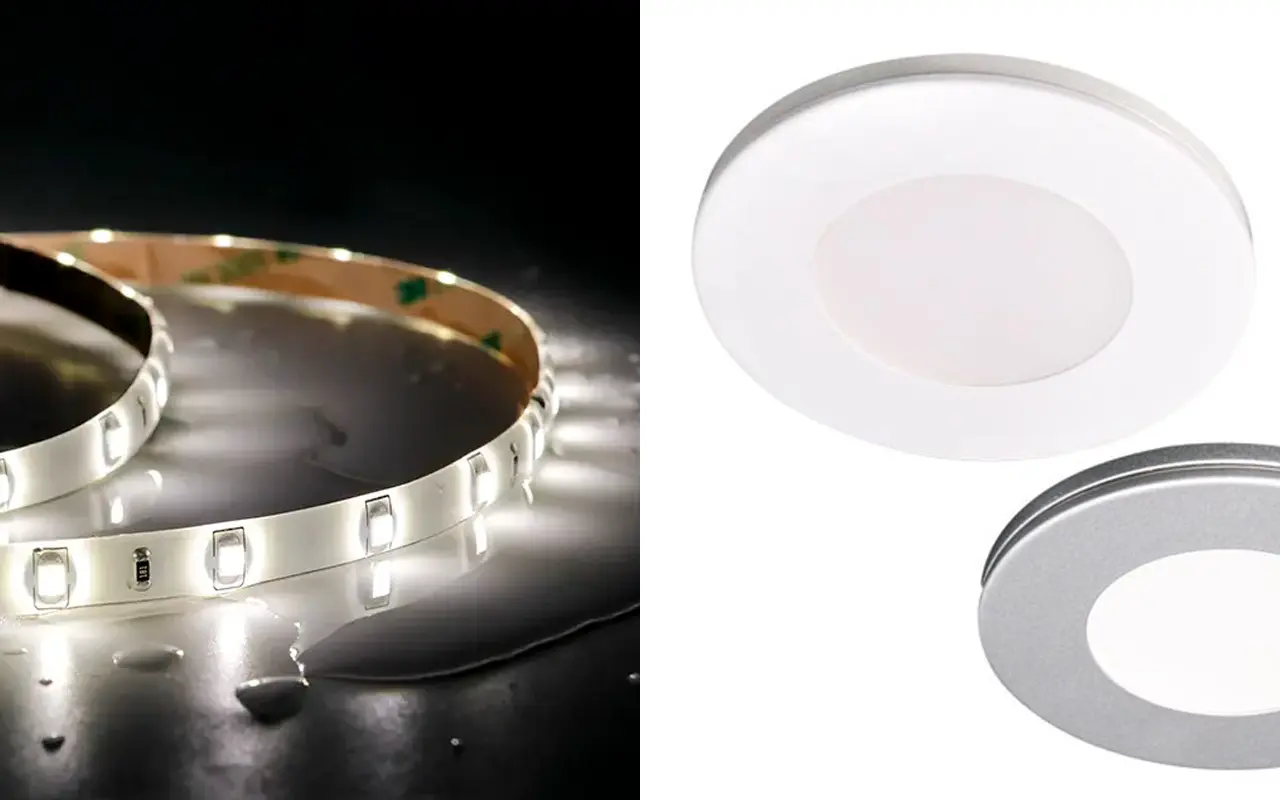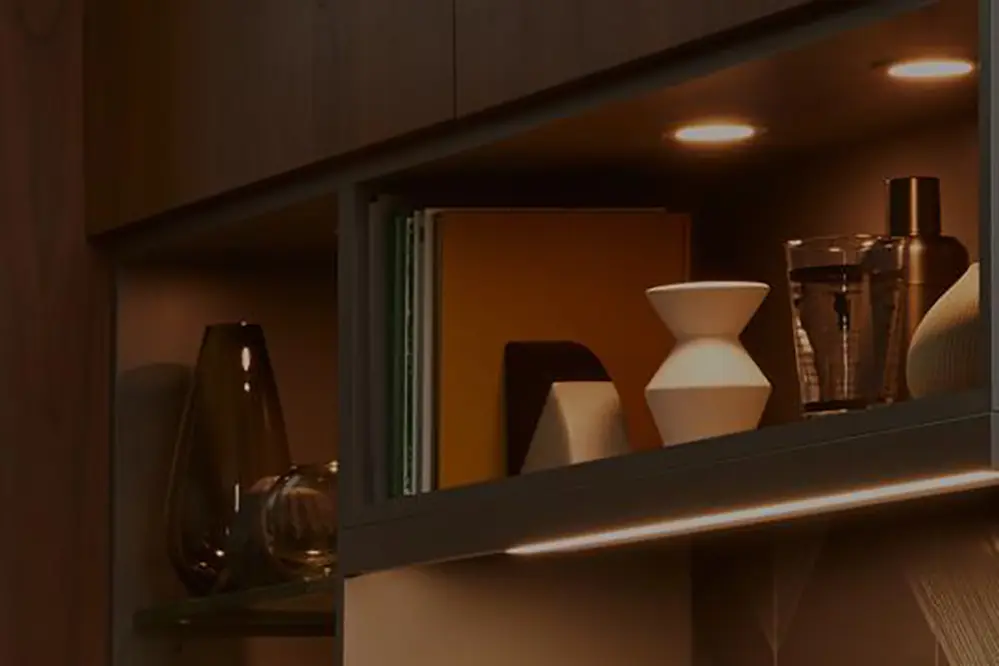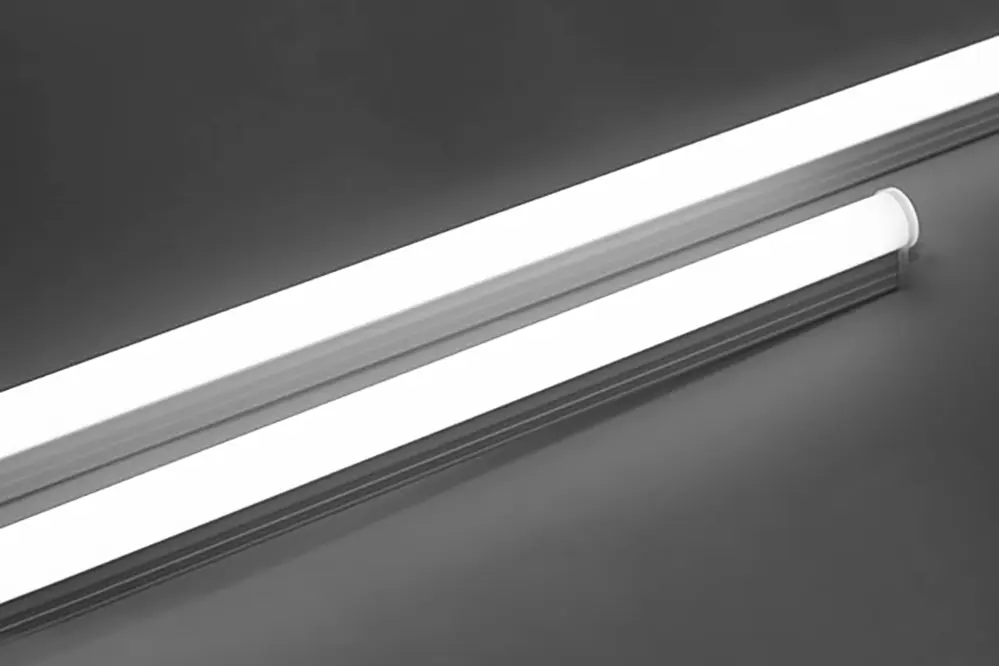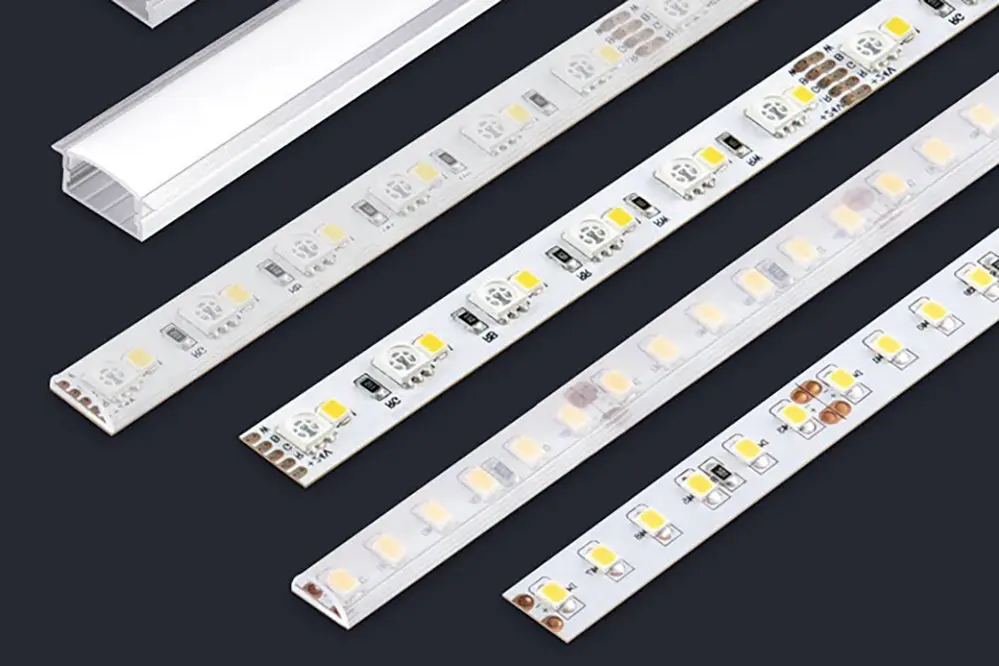In the quest for perfect kitchen lighting, the debate between LED strip lights and puck lights takes center stage. This article delves into these popular lighting choices, offering insights to guide your decision-making process.
Our analysis is grounded in thorough research and comparisons. We’ve examined various aspects, including design versatility, energy efficiency, and overall aesthetic impact. Our recommendations are based on detailed evaluations of each lighting type’s features and practical applications in modern kitchen designs.
As we unfold the layers of LED strip and puck lights, you’ll gain a clearer understanding of how each can enhance your kitchen space. With this knowledge, you’re equipped to make an informed choice that best suits your lighting needs. So, let’s embark on this illuminating journey together.
Deep Dive into LED Strip Lights
LED strip lights, or LED tape lighting, embody versatility. They consist of long, flexible strips with small LED bulbs arrayed on a circuit board, providing continuous, even lighting. This design adapts to various applications, from straight runs under cabinets to curved contours around kitchen islands.
Vantaggi delle strisce luminose a LED
- Flexibility in Design: LED strip lights can be custom-cut, offering unparalleled adaptability for different kitchen layouts.
- Energy Efficiency: These lights consume less electricity than traditional options, leading to significant cost savings and a smaller environmental footprint.
- Variety in Color and Intensity: With a broad spectrum of colors and brightness levels, LED strip lights can create the desired mood and ambiance in your kitchen.
Challenges with LED Strip Lights
- Installation Nuances: While some LED strip lights come with self-adhesive backs for straightforward installation, others may require more complex setups. This could involve arranging drivers and ensuring proper electrical connections, which might necessitate professional assistance.
- Maintenance and Durability Concerns: Although LED strip lights are generally durable, their longevity can be influenced by various factors. Exposure to high temperatures and frequent usage can impact their lifespan, necessitating periodic checks and potential replacements.
Exploring the World of LED Puck Lights
Puck lights, resembling hockey pucks, are compact and offer concentrated lighting. They’re available in both surface-mounted and recessed formats, making them excellent for focused illumination in specific kitchen areas.
The Benefits of Choosing Puck Lights
- Compact and Aesthetically Pleasing: Puck lights can seamlessly integrate into your kitchen’s design, adding elegance without overpowering the space.
- Simplicity in Installation: Options like wireless and battery-operated models make puck lights a convenient choice for challenging wiring spots.
- Precision in Spot and Accent Lighting: Ideal for task lighting, puck lights enhance kitchen countertops, workspaces, or decorative elements.
Drawbacks of Puck Lights
- Limited Design Flexibility: Given their fixed shape and size, puck lights may not offer the same versatility as strip lights. They’re better suited for targeted lighting rather than whole-area illumination.
- Light Distribution and Intensity: The concentrated nature of puck lights can create scallop-shaped shadows, which might not be desirable in all kitchen settings. This effect needs to be considered when planning the layout of your puck lighting.
LED Strip vs Puck Lights: A Comparative Analysis
LED strip lights offer uniform lighting and a contemporary look, suitable for general kitchen illumination. Puck lights, with their spotlight effect, add a traditional touch, perfect for task lighting and highlighting specific areas.
Aesthetic Appeal and Design Versatility
LED strip lights provide a sleek, modern look that seamlessly blends into various kitchen styles. Their linear form factor allows for creative design solutions, such as hidden cove lighting or under-counter illumination. Puck lights, on the other hand, offer a more classic and focused light source. They can be strategically placed to highlight specific kitchen features, like glass cabinets or unique countertops, enhancing the overall design aesthetic.
Efficiency, Brightness, and Light Quality
LED strip lights excel in delivering consistent, widespread illumination across larger areas like kitchen counters or islands. This makes them ideal for general kitchen lighting, where even light distribution is key. Puck lights provide more concentrated beams, making them perfect for task areas such as cooking or food preparation stations. Both types of lights are energy-efficient, but their lighting characteristics cater to different functional needs.
Smart Technology Integration
Both LED strip lights and puck lights are compatible with smart home technology, allowing for convenient control and customization. With smart integration, you can adjust brightness, change colors (if RGB options are used), and set lighting schedules via mobile devices or voice assistants, enhancing the user experience and bringing modern convenience into kitchen lighting.
Installation Insights
LED strip lights are generally DIY-friendly, with many models featuring adhesive backs for easy placement. Puck lights also offer straightforward installation options, including wireless models for ease of use. However, for more complex lighting setups or when integrating with existing home wiring, professional installation is recommended to ensure safety and optimal functionality.
Longevity and Durability
Both LED strip lights and puck lights are known for their long lifespan, reducing the need for frequent replacements. However, the longevity of each can be influenced by factors such as usage patterns and installation quality. It’s important to consider the build quality and warranty of the lighting products to ensure long-term reliability and performance.
Cost Considerations and Value for Money
While both lighting options are cost-effective in the long run due to their energy efficiency and durability, they vary in initial setup cost and coverage. LED strip lights might require a higher initial investment but offer extensive area coverage, which can be more valuable over time. Puck lights are typically more budget-friendly upfront and are ideal for smaller, targeted lighting applications.
Tailoring to Your Kitchen’s Style
The choice between LED strips and puck lights depends on the specific lighting requirements and the layout of your kitchen. Strip lights are best suited for overall kitchen lighting, providing a uniform light layer. Puck lights are more suitable for creating focal points or for task-oriented lighting in areas that require concentrated light, adding depth and character to your kitchen’s design.
Ultimately, the decision between LED strips and puck lights should align with your kitchen’s overall style and decor. Whether you’re aiming for a modern, minimalist look or a traditional, cozy feel, the right lighting can complement and elevate your kitchen’s aesthetic.
Conclusione
LED strip lights are highlighted for their ability to provide uniform, wide-reaching illumination, making them suitable for general kitchen lighting with their modern aesthetic. Puck lights, known for their focused lighting, are ideal for task-specific areas and add a traditional touch. Both are energy-efficient and can integrate with smart home systems, but they differ in installation ease and initial cost. The choice between strip and puck lights should align with one’s specific kitchen needs, style preferences, and desired ambiance.
For quality undercabinet lighting, consider Unitop, China’s leading Striscia luminosa a LED e LED al neon flessibile manufacturer. Contatto Unitop for expert guidance and to illuminate your kitchen with efficiency and style.
Messaggi correlati

Tom è ora il Direttore Vendite di Unitop (Cina) Co., Limited. È stato nella Illuminazione a LED industria dal 2005. È un esperto di vendite e marketing e di gestione della fabbrica. Gli piace il bodybuilding ed è anche un fan sfegatato di Apple! È un lavoratore instancabile e ama imparare e provare cose nuove.
Email: tom@unitopledstrip.com WhatsApp: +86-18680307140







Lascia un Commento
Vuoi partecipare alla discussione?Sentitevi liberi di contribuire!